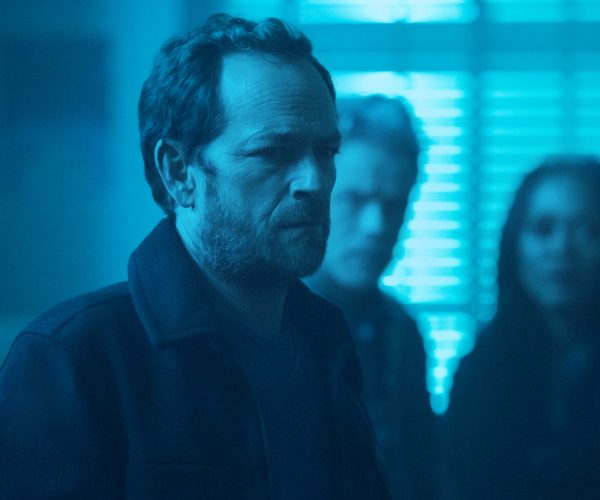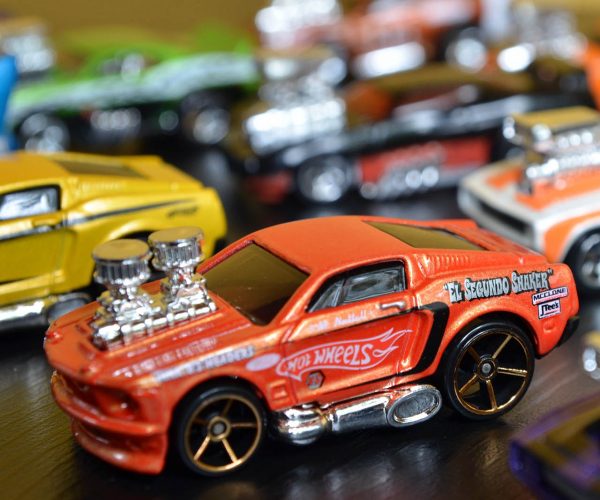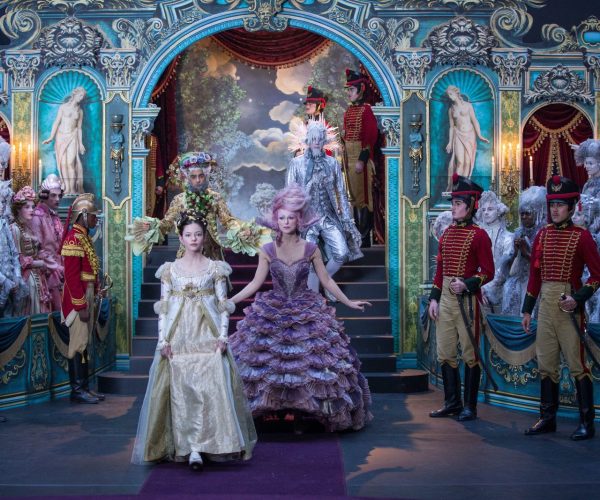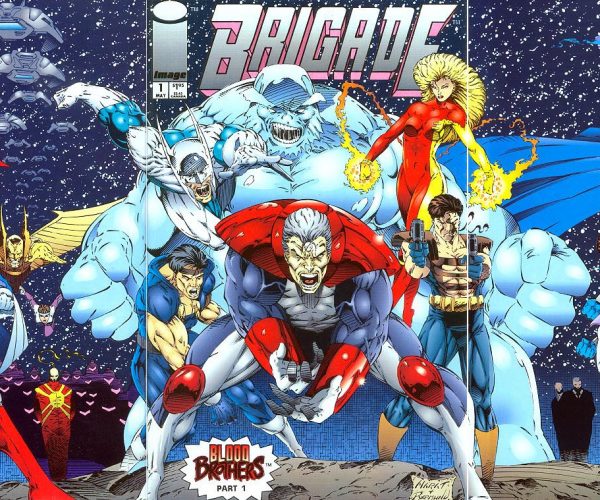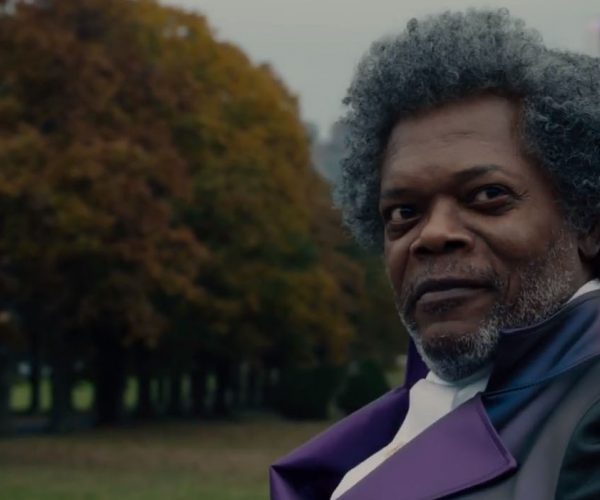An almost infamous story came out alongside the release of The Hobbit: An Unexpected Journey a few years back. Dwarves and wizards aren’t real, but movie magic made them look it for the movie. Part of that magic was taking the humans – dressed as dwarves – and filming them separately from the big tall wizard. Ian McKellen was, for the sake of the special effects, forced to act alone against a green screen so that he could be added later into the scene by VFX artists. At the time, he said that “perhaps the time has come for me to stop acting altogether if I can’t cope with these difficulties.”
I wonder what he’d have to say about the way Robert Rodriguez and Weta Digital put Alita: Battle Angel together. It’s still a bunch of high-tech wizardry, but I think he’d find himself a lot more at home with it.
In Alita, the actors never had to act alone or with significant time in green-screen sets despite the fact that Rosa Salazar’s Alita was made entirely from CG, and that her big, tall enemy Grewishka, was nearly twice her height, and probably ten times her weight.
Below, you can see me dressed up in a motion-capture suit as Robert Rodriguez directs me and pair of the stunt actors – Ike and Shane – through a short scene.
Suiting up for Performance Capture
Here’s how it all works. We’ve all seen bits and pieces of this in places like behind-the-scenes footage of movies and games. First, the team suited me up in jumpsuit made of stretchy material with lots of spots for velcro to latch onto. Then, the team covered me in little reflective beads just a little bit smaller than marbles. They were on my head, my arms, my fingers, down my legs to the tips of my shoes.
There are specialists who do this work and make sure that actors get beaded up the same way each day so that motion capture results come back the same way. For example, I had beads on my index and pinky fingers, but not on my middle two fingers. That’s because with the amount of definition in the filming cameras today, the end result wouldn’t be four individual fingers but rather just a mess of dots on the screen. It’s easy to imagine, with that in mind, how easy it would be to mess up a day’s work with a few misplaced beads.
Once I was all beaded up, the team took me to a room with a pedestal surrounded by cameras. In there, they synced my height, arm span, and weight up to the character model I’d be acting inside. I had to do a bunch of stock poses, and then improvise a bit to make sure that my unique body movements wouldn’t shake the character loose and get a weird result.
Once I was all synced up, it was time to go into the set.
The set I got to act on had what I called a “laser tag” feel to it. Structures were generally in the places they would be in the movie, but they weren’t dressed up at all. Just black pipes, black surfaces – anything to make the actors stick out more. For Alita, though, most of the filming was done on real, fully blown out sets. The backgrounds in the movie are real, not CG.
Laser Tag, Hollywood Style
In either case, the filming area is surrounded by cameras (86 on this set) that catch every movement. Even subtle things like posture changes are captured. In the case of a main character, the actor will have high-definition cameras mounted on a headset to ensure that their minute facial details are captured alongside their body movements.
The other thing Mr. McKellen would love is that this method lets actors act together regardless of their characters’ size. As the above video shows, I was acting against a character much bigger than myself. So that actor acted a few feet away from me while I looked up at a tennis ball and then down at a pillow. And once time for action came, I was able to wail on the padded set with the heavy steel prop guitar like I meant it. I’d be in a New Zealand jail if I’d done that to a real person.
I’m not going to claim to be a professional actor in any sense, but I was amazed at how easy it was to get into character. Pushing my chest out, cocking my head, and getting violent when the scene called for it. All of that played out on the screen in a lower-res real-time render that showed us what was happening, and it seems clear to me that this is one of the big futures of movies.
Chatting with Robert Rodriguez
This whole rig, once set up and calibrated, makes many parts of moviemaking easier.
When I picked up that guitar, I dipped it into a barrel fire, and the guitar lit on fire. That fire was dynamic, the same way that it would be in a video game. There wasn’t someone sitting at a console hitting the “make fire” button. While not everything on the set can catch on digital fire, the guitar was one such item. There’s no need to re-set props, keep a fire extinguisher ready, or even worry about the fire working. But there’s still that dynamic element that could bring some surprise to a shot.
“It starts fooling you after a while,” said Alita director Robert Rodriguez while we chatted after the action sequence. I was in one of the sets where they had a mirror behind the bar and I said, push in on the mirror, can I see the reflection? And they can put the reflection in there. You start thinking you’re on a real set after a while.”
It’s not easy, though.
“[Alita] is the first time I’d done performance capture, especially Jim’s version of performance capture. I had to go to a whole class, with him, him teaching me how, with the Weta guys… so I could see what methods we would use in this film.”
The end result, though, is that actors don’t have to use their imaginations on set. Or perhaps more accurately, they’re able to focus their imagination and mental energy on acting and playing the character rather than on imagining the space.
Rodriguez is perhaps best known for his movie Sin City, based on the Frank Miller comic. Back then, he had Mickey Rourke walking on a treadmill against a green screen to get shots of him walking.
“In Sin City, I’d show [the actors] images of the comic and go, this is all green, but you’re going to be somewhere kind of like this, and they could kind of imagine it.”
Now, the actors can just be somewhere kind of like that.
The directors, too, get to focus more on acting, Rodriguez says.
“I’m getting performance on a green screen, but I’m also getting the camera shot, lighting it,” he said. They have to worry about the camera moving through the set and the set getting in the way. “Here, we’re only getting the performance, and I’m only working with you as an actor.”
The director can take the motion capture footage later, after the actor’s out of the suit, at home resting. They can go through the whole recording and “re-shoot” the scene from any number of angles, any lighting configuration.
While the infrared cameras up above are recording the movement, the director is watching on a rig that compares best to something like a Nintendo Switch. It’s a tablet-sized screen with a proprietary but very video-game-like controller segment on either side. The rig has plugins for gyroscopic motion detection, so a director can go in for a low shot if they want. If they want to be up high, the tech at the console can place them in a high position, and then they can get the same performance but from a whole new angle. Once the director has the performance they want, the actor is done. They don’t have to replicate that performance again and again. The actor is never affected by the camera being out of focus.
Despite the very high-tech nature of all this equipment, it actually serves to start removing the technical aspect of filmmaking. This kind of moviemaking isn’t going to replace say, a scene of two people sitting at a cafe and talking about life. But for Alita, for something like The Hobbit, this will change everything. The artists can make art.
I don’t know if I’d call what I made art, per se, but just by suiting up and becoming a cyborg, I got a taste of it. Some velcro and reflective beads are all it took.














































